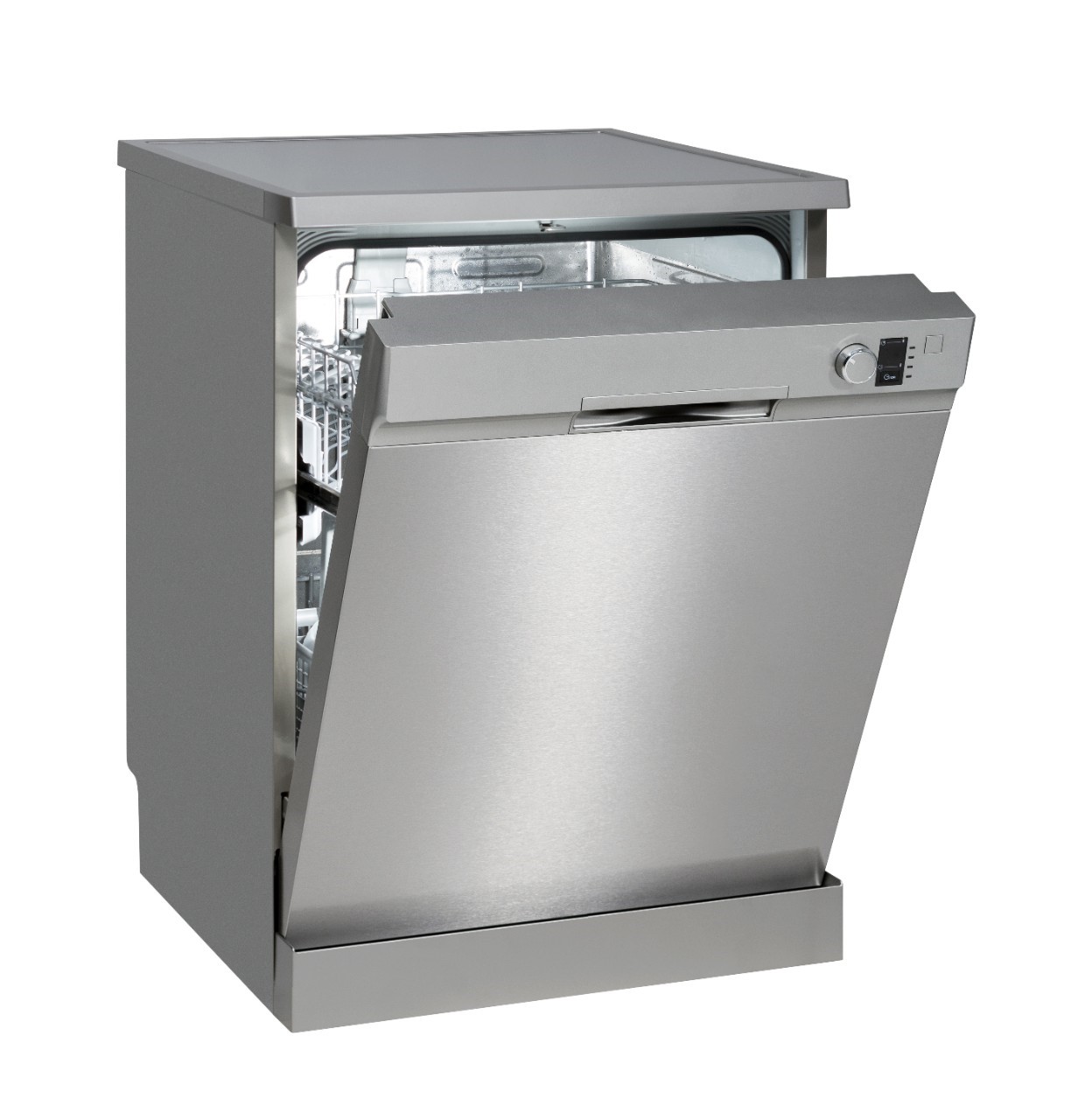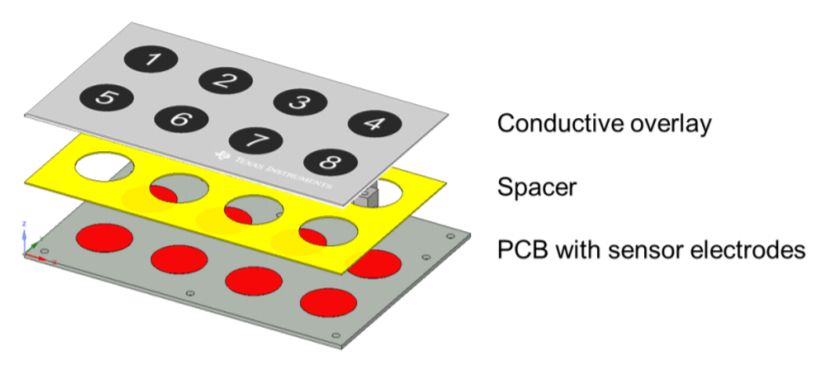SSZT462 june 2019 MSP430FR2675 , MSP430FR2676

Dishwasher products have evolved from a luxury appliance into an essential kitchen appliance for most households. While dishwasher prices vary mainly because of their capacity and brand name, there are now additional features like stainless-steel finishes and capacitive touch interfaces.
Capacitive touch technology is changing how consumers operate dishwashers, and also motivating designers to innovate. Let’s look at how capacitive touch technology offers new ways to design and implement user interfaces and address the associated challenges.
Capacitive Touch through Metal
 Figure 1 Stackup of Metal Touch
Figure 1 Stackup of Metal TouchTemperature and Humidity Drift
-
The long-term-average (LTA) tracks measurement drift associated with gradual environmental changes through a slow-moving infinite impulse response filter.
-
The touch threshold varies proportionally with the LTA rather than as an absolute offset in order to maintain sensitivity.
-
If runtime recalibration is enabled, the system will recalibrate if the LTA drifts outside of a window set above or below one-eighth of the specified conversion count, renormalizing the sensors to the specified conversion count.
These three methods work together to ensure that the system behaves as designed across its lifetime, even with temperature and humidity changes.
More than a Capacitive Touch Controller
 Figure 2 CapTIvate MCU
Portfolio
Figure 2 CapTIvate MCU
PortfolioIntegrating all of these features with a single MCU requires more than a fixed-function or stand-alone capacitive touch controller. The MSP430 CapTIvate MCU family offers a wide portfolio of capacitive touch controllers (see Figure 2) that scale with your system integration requirements.
Additional Resources
-
Learn more about MSP430 capacitive touch sensing microcontrollers.
-
Learn more about CapTIvate technology in the “CapTIvate™ Technology Guide.”
-
Read these application reports:
-
“Capacitive Touch Design Flow for MSP430 MCUs With CapTIvate Technology.”
-
“Capacitive Touch Through Metal Using MSP430 MCUs With CapTIvate Technology.”